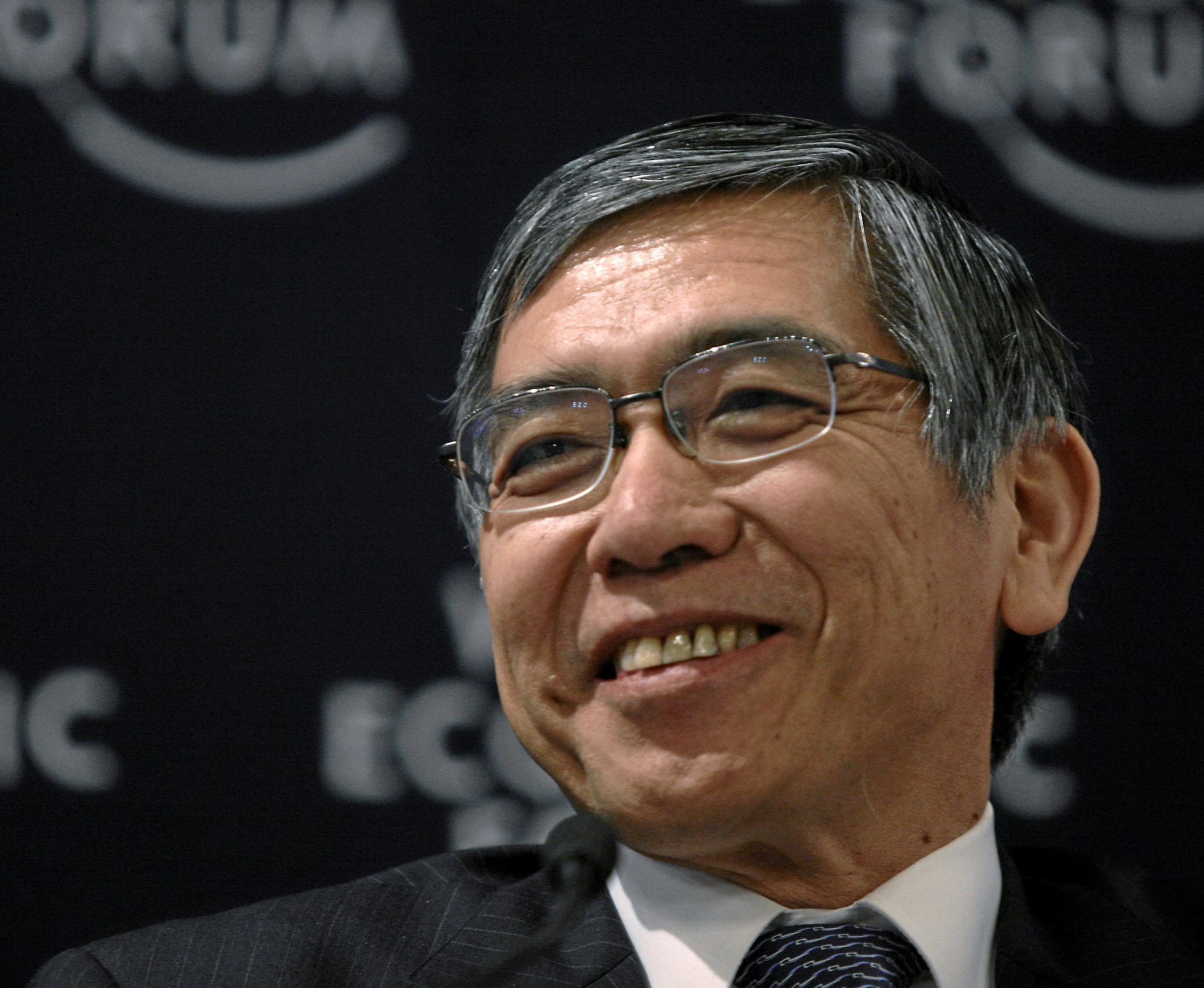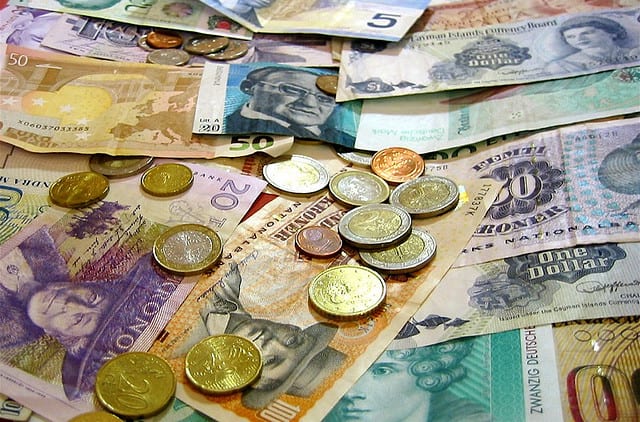
Dear Readers,
Major changes are about to take place at Equedia.com next week. As a result of our growth, the Equedia.com website will be changing to focus strictly on this newsletter.
But don’t worry; you will still have access to all of the videos, third party coverage, detailed quotes, advanced charting, insider information, and more on a new partner website to be announced next week.
Trust me; there will be some great new services for every investor. You do not want to miss next week’s Letter, as I explain in-depth about brand new services on our new partner website that will surely benefit you.
Let’s move on.
Story of the Year
The theme this year is all about world indexes making new highs as a result of the growing currency war.
Without a doubt, the market rally has been fuelled by the exponential printing of currency; I have said this many times over the past years, calling for a continued upward movement in the major indexes of countries engaged in the act of reckless debasement.
Last month, I said Japanese stocks will rally as a result of the massive stimulus plans announced by new Japan Prime Minister, Shinzo Abe. This Friday, the Nikkei closed above the 12,500-mark, setting a new four and a half year high.
Abe wants to see Japan’s inflation rate at 2% and has told the Bank of Japan (BOJ) to hit that target by printing more money and doing whatever it can to stimulate the cause.
But for a country that has been stuck in a deflationary state for most of the last 20 years – and never even reaching close to 2% inflation – the task of reaching Abe’s target will require an extremely massive amount of newly created Yen.
Ben Bernanke II: Haruhiko Kuroda
In just a few days, Abe’s ultra-loose monetary agenda and fiscal stimulus will begin to take place.
Next week, Haruhiko Kuroda will become the new BOJ governor. Kuroda has already boldly promised to attain the BOJ’s 2 percent inflation target within two years, in a “whatever it takes” mentality.
That means Kuroda will likely begin purchasing longer-dated government bonds as well as assets that come with much higher risks, such as stocks and derivatives. This is a rare move by a central bank, but follows in the footsteps of the U.S., whereby the Federal Reserve acquired assets, including derivatives such as credit-default swaps and interest-rate swaps, as part of its 2008 rescue of Bear Stearns.
Kuroda has also stated that the BOJ could purchase trillions of dollars (not yen) in assets under his leadership. For a country whose GDP is nearly three times smaller than the United States, that’s a crazy bold statement.
The scary part is that the BOJ is already creating huge amounts of cash; so much that it will boost the cash and reserves held by banks to 170 trillion yen (~$US1.8 trillion) by December. That’s 29 percent more from a year earlier and represents roughly 36 percent of Japan’s nominal GDP.
The value of current account deposits placed by banks with the BOJ – a measure of spare cash in the economy – is set to almost double by the end of the year from the current 44 trillion yen to 85 trillion yen (~US$890 billion). That’s more than double the peak level during the BOJ’s five-year quantitative easing policy of 2001-2006.
The number of people receiving welfare benefits in Japan has already hit an all-time high for the eighth consecutive month in December, totaling 2,151,165. The number of households on welfare hit 1,570,823 – also a new record. The country is already the world’s most indebted nation; so much that it spends nearly a quarter of its tax income on interest payments alone at current zero percent interest rates.
Their only way out is to make the debt bubble Ponzi scheme even bigger. Let the money fly.
Risks of the Nikkei
A lot of economists say the risks for investing in the Japanese markets are too grand given the nature of Japan’s economy. But I am going to say the same thing I said about the US markets last year: The Japanese markets will continue to make new highs — despite the recent run up.
The Nikkei is at a four-and-a-half-year high, while the yen is at a three-and-a-half-year low. The correlation speaks for itself.
Never make short term bets against an entity that can print unlimited amounts of money. Unless you’re short the currency, that is…
Currency Wars to Intensify
With the record amount of printing about to take place in Japan, the currency war will intensify – especially with Japan and China. Tensions are already growing between the two countries and the continued massive and aggressive printing of Japan will likely be met with serious and public opposition by China.
The next BOJ meeting will be scheduled for the first week of April. Be prepared for a more substantial and concrete announcement of yen devaluation.
Japan’s Domino Effect
While the media may have already brushed aside Japan’s monetary actions, you shouldn’t.
Here’s just one small reason why: Germany.
Exports to China have been a driving force for Germany’s recovery since 2008, especially with the devaluation of the euro.
Since Germany and Japan target similar markets, with seven out their top-20 trading partners being the same, Japan’s devaluation could take away from Germany’s growth and give Japan an unfair competitive advantage.
Germany is Japan’s fourth most important export market, while Japan is Germany’s 10th most important export market. As the yen is devalued against the euro, Japan will benefit from more exports to Germany, while Germany will suffer from fewer exports to Japan.
China is the most important export market for Japan, while Germany’s exports to China have fueled amazing growth for the country. Germany is China’s number-one trade partner in the EU: nearly half of all EU exports to China come from Germany. That means Germany will likely suffer from a lower yen as Chinese businesses find it more cost effective to deal in yen, then in euro.
Japan is currently the fourth largest trading partner for the U.S; Germany’s second biggest export consumer is the United States. You can see how a devalued yen would affect trade between these two nations.
If Germany, the strongest player in the Eurozone’s economy, suffers from declining exports, the ECB will be forced to debase just to keep up. Recovering world economies will follow suit.
Growing countries, such as China, will then suffer from inflation as they are forced to print to keep up (see America’s Gold Wiped Out). China cannot afford a strong yuan, nor can they afford rampant inflation. In both cases, China’s growth will stall, leading to a worldwide economic decline.
This currency battle is a lot worse than the media will have you believe. Don’t be fooled.
The Gold Trade
How can I talk about currency wars, without talking about gold?
It seems the media sentiment for gold continues to weaken. We just saw the biggest net short position in gold futures and options since 1999. As a matter of fact, over the past two months, exchange traded funds have sold 140 tons of gold, with February seeing the largest monthly outflow on record.
While that may seem like a lot, I should point out that 140 tons is only 0.082% of the world’s gold supply.
While worldwide gold ETF’s control a big portion of the gold market, the mere outflow of 0.082% is like a grain of rice in a paddy field, especially when liquidated over a span of two months.
However, mass theory dictates the near-term price. And with gold sentiment moving down, the short term price will continue to see downward pressure.
One question I get asked a lot is, “If central banks continue to buy and hoard gold (physical, not its paper manifestation) at record pace, why isn’t the price of gold moving up?”
Let me answer that with another question: “If you know the price of something will only increase over time, would you not want to buy it at the lowest price possible?”
The governments and central banks would much rather quietly buy gold at lower prices (just like the Chinese have done with their sovereign wealth funds); having the manipulators force the price down only helps their cause.
Gold Manipulation…Again?
I have been talking about gold and silver price manipulation for years. It seems that finally the government is taking notice — at least publicly anyway.
The CFTC is once again “discussing internally” about the possibility of whether the daily London gold and silver price fixing is open to manipulation.
From the WSJ:
“The Commodity Futures Trading Commission is discussing internally whether the daily setting of gold and silver prices in London is open to manipulation, according to people familiar with the situation.
No formal investigation has been opened, the people said. The CFTC is examining various aspects of the so-called price fixings, including whether they are sufficiently transparent, they said.
Gold prices are set twice daily by five banks via teleconference, while three banks set silver prices. The fixings are then used to determine spot prices world-wide, including jewelry and sales from mining companies to refineries. The prices also help determine the value of derivatives tied to the metals.
The London gold market fix dates from 1919, and now sees twice-daily conference calls involving units of five banks: Barclays, Deutsche Bank AG, HSBC Holdings PLC, Bank of Nova Scotia and Société Générale.”
I am sure the media and government will brush this investigation aside. But know that there are forces at work here that prove gold’s worth on the world stage.
Gold is not about making a quick buck. It’s about preserving wealth and protecting against worldwide debasement.
As Bill Gross said, “They say that time is money. What they don’t say is that money may be running out of time.”
I am not saying the dollar, yen, yuan, or the euro will disappear or fail (even though all fiat currencies have failed throughout history); I am simply looking at it from a purchasing power perspective.
I can buy gold and silver now, wait some years, and then likely trade it for a lot more paper money than I could today.
It really is that simple.
Until next week,
Ivan Lo
Equedia Weekly

Questions?
Call Us Toll Free: 1-888-EQUEDIA (378-3342)
Disclosure: I am long gold and silver through ETF’s and bullion, as well as long both major and junior gold and silver companies. Our reputation is built upon the companies we feature. That is why we invest in every company added to our Equedia Select Portfolio. It’s your money to invest and we don’t share in your profits or your losses, so please take responsibility for doing your own due diligence. Remember, past performance is not indicative of future performance. Just because many of the companies in our previous Equedia Reports have done well, doesn’t mean they all will.
Disclaimer and Disclosure
Equedia.com & Equedia Network Corporation bears no liability for losses and/or damages arising from the use of this newsletter or any third party content provided herein. Equedia.com is an online financial newsletter owned by Equedia Network Corporation. We are focused on researching small-cap and large-cap public companies. Our past performance does not guarantee future results. Information in this report has been obtained from sources considered to be reliable, but we do not guarantee that it is accurate or complete. This material is not an offer to sell or a solicitation of an offer to buy any securities or commodities.
Furthermore, to keep our reports and newsletters FREE, from time to time we may publish paid advertisements from third parties and sponsored companies. We are also compensated to perform research on specific companies and often act as consultants to many of the companies mentioned in this letter and on our website at equedia.com. We also make direct investments into many of these companies and own shares and/or options in them. Companies do pay us to advertise on our website and we often distribute our reports on featured companies. While we are never paid to write a rosy and positive report on any company, we do market our reports using the advertising fees paid for by our featured companies. This process allows us to continue publishing high-quality investment ideas at no cost to you whatsoever. Our revenue is generated by sponsor companies and we grow our readership by using the advertising fees we charge to distribute our reports. This helps both Equedia and our client companies gain exposure and allows us to provide you with our research at no cost.
Therefore, information should not be construed as unbiased. Each contract varies in duration, services performed and compensation received.
If you ever have any questions or concerns about our business or publications, we encourage you to contact us at the email or phone number below. Equedia.com is not responsible for any claims made by any of the mentioned companies or third party content providers. You should independently investigate and fully understand all risks before investing. We are not a registered broker-dealer or financial advisor. Before investing in any securities, you should consult with your financial advisor and a registered broker-dealer. The information and data in this report were obtained from sources considered reliable. Their accuracy or completeness is not guaranteed and the giving of the same is not to be deemed as an offer or solicitation on our part with respect to the sale or purchase of any securities or commodities. Any decision to purchase or sell as a result of the opinions expressed in this report OR ON Equedia.com will be the full responsibility of the person authorizing such transaction.
Please view our privacy policy and disclaimer to view our full disclosure at http://equedia.com/cms.php/terms. Our views and opinions regarding the companies within Equedia.com are our own views and are based on information that we have received, which we assumed to be reliable. We do not guarantee that any of the companies will perform as we expect, and any comparisons we have made to other companies may not be valid or come into effect. Equedia.com is paid editorial fees for its writing and the dissemination of material and the companies featured do not have to meet any specific financial criteria. The companies represented by Equedia.com are typically development-stage companies that pose a much higher risk to investors. When investing in speculative stocks of this nature, it is possible to lose your entire investment over time. Statements included in this newsletter may contain forward looking statements, including the Company’s intentions, forecasts, plans or other matters that haven’t yet occurred. Such statements involve a number of risks and uncertainties. Further information on potential factors that may affect, delay or prevent such forward looking statements from coming to fruition can be found in their specific Financial reports.
Equedia Network Corporation is also a distributor (and not a publisher) of content supplied by third parties and Subscribers. Accordingly, Equedia Network Corporation has no more editorial control over such content than does a public library, bookstore, or newsstand. Any opinions, advice, statements, services, offers, or other information or content expressed or made available by third parties, including information providers, Subscribers or any other user of the Equedia Network Corporation Network of Sites, are those of the respective author(s) or distributor(s) and not of Equedia Network Corporation. Neither Equedia Network Corporation nor any third-party provider of information guarantees the accuracy, completeness, or usefulness of any content, nor its merchantability or fitness for any particular purpose.












